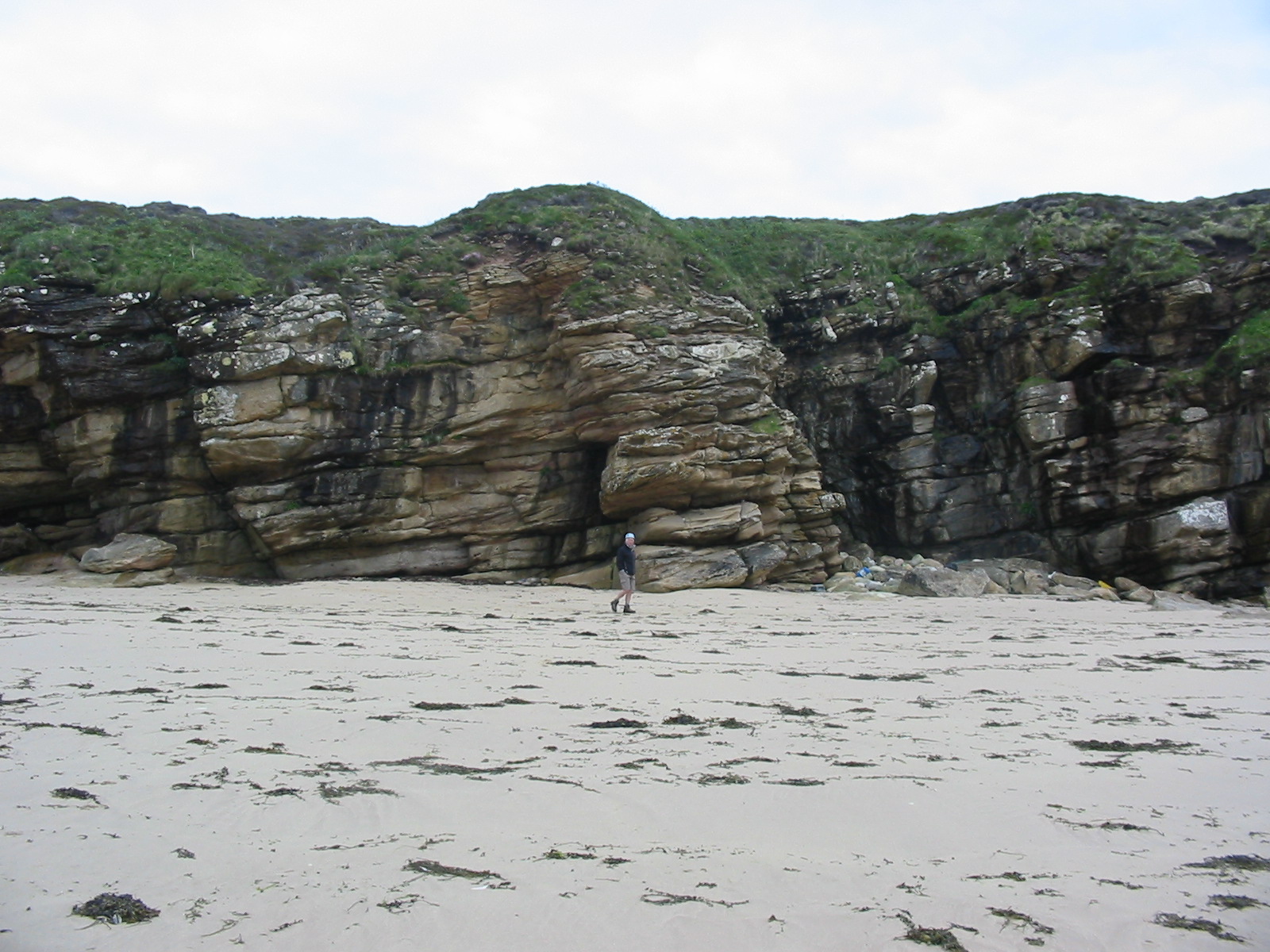It is often an oversimplification to represent faults as single planes in models as the fault zone (Figure 1) usually has more than one fault plane or slip surface. Theres often some confusion as to what constitutes a fault zone. Childs et al (2009) places it between paired slip surfaces. A damage zone may reach outside of the fault zone. See Figure 1.
The fault core or fault rock is the thin halo around each slip surface (thick black lines in Figure 1). Fault zone thicknesses reported by Beach et al. (1997) and Knott (1994) are classified as fault rock thicknesses by Childs et al. (2009).
Figure 1. Fault zone terminology from Childs et al (2009)
Some outcrop examples are given from a field trip to Caithness and Orkney several years ago to examine analogues for the Clair Field (West of Shetland).
An example of paired slip surfaces (normal fault) in Devonian Sandstones from Caithness, UK, is given in Figure 2. This fault zone cuts through fluvial channel sandstones (cross-bedding visible at label 1). There is some normal drag of the beds (marked white lines at label 2) against slip surface/fault A. See post “Think about Fault Drag". Slip surface/fault B appears to be the major fault as there is very quartzitic, splintery fault rock next to it (label 4). In between the 2 faults (A and B), the bedding has been rotated and the fault zone also contains blocks of undeformed sandstone (label 3). I don’t have a note of the spacing between the different fault zones but they are fairly regularly spaced along the beach (Figure 3).
An example of hard splintery fault core or fault rock (Figure 1) is given in Figure 4. This is from the North Scapa Fault, Ophir Bay in Orkney.
Figure 2. Fault zone with at least 2 slip surfaces, Caithness (coast near Thurso), Scotland, UK. (a) uninterpreted, (b) interpreted.
Figure 3. Faulted cliffs along the coast just outside of Thurso, Caithness, UK.
Figure 4. Hard, splintery fault core with fractures – North Scapa Fault, Orphir Bay, Orkney.
References
Beach, A., J. L. Brown, A. L. Welbon, J. E. McCallum, P. Brockbank, and S. Knott, 1997, Characteristics of fault zones in sandstones from NW England: Application to fault transmissibility, in N. S. Meadows, S. P. Trueblood, M. Hardman, and G. Cowan, eds., Petroleum geology of the Irish Sea and adjacent areas: Geological Society (London) Special Publication 124, p. 315–324.
Childs, C., Manzocchi, T.,Walsh, J. J., Bonson, C. G., Nicol, A. & Schopfer, M. P. J. 2009. A geometric model of fault zone and fault rock thickness variations. Journal of Structural Geology, 31, 117–127.
Knott, S.D., 1994. Fault zone thickness versus displacement in the Permo-Triassic sandstones of NW England. Journal of the Geological Society 151, 17–25.





